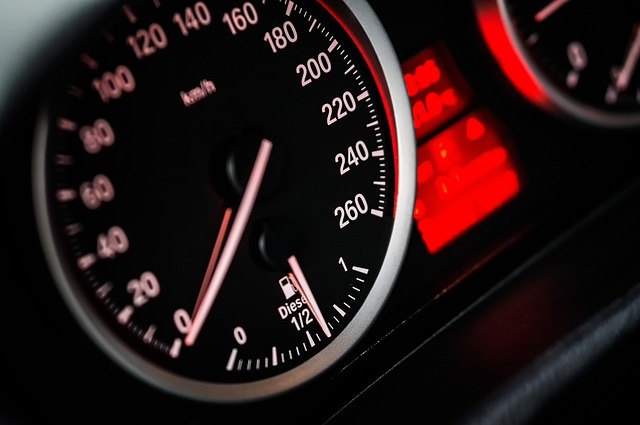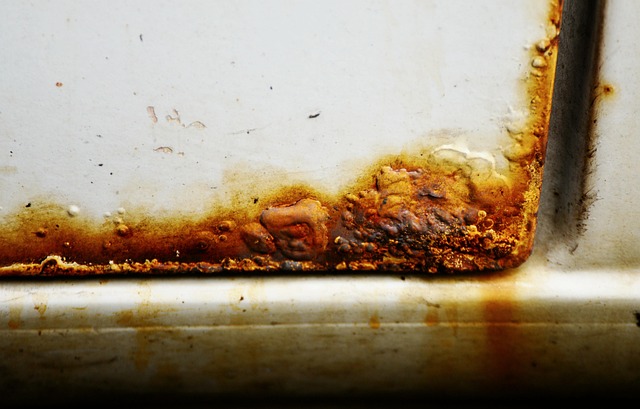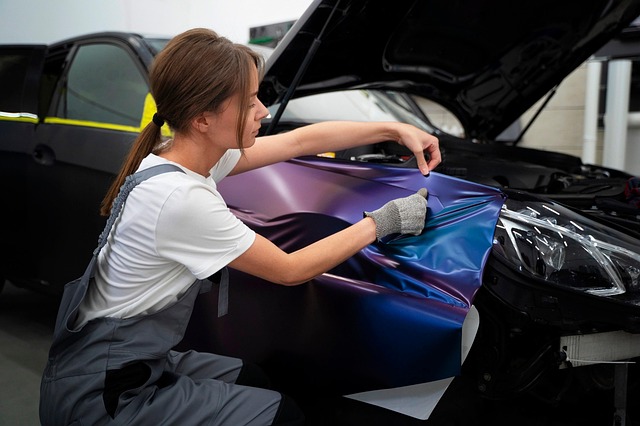“Unveiling the Science Behind Automotive Paint Types and Formulations: From Basics to Future Trends
Automotive paint isn’t just a coat of color; it’s a complex formulation designed for durability, aesthetics, and protection. This article dives into the intricate world of automotive paints, exploring their chemical composition, diverse types, and evolving technologies. We’ll uncover the secrets behind pigments, resins, and modern coatings, providing an in-depth understanding of how these innovations shape the automotive industry. Prepare to navigate through conventional to advanced paint systems, uncovering specialized formulations tailored for specific vehicle needs.”
- Understanding the Basics of Automotive Paint Formulations
- – Chemical composition and key components
- – Types of pigments and their functions
Understanding the Basics of Automotive Paint Formulations

Automotive paint formulations are a complex blend of resins, pigments, and additives designed to protect and enhance vehicle surfaces. Understanding the basics involves grasping how these components interact. Resins, the backbone of paint, provide durability and flexibility, while pigments offer colour and reflectivity, safeguarding the metal or plastic beneath from UV rays and environmental damage. Additives further refine performance by improving flow, drying time, and resistance to chipping or fading.
Choosing the right automotive paint type is crucial for a smooth finish and long-lasting protection. Different formulations cater to various needs, from standard lacquers offering excellent coverage to more advanced types like polyurethanes that provide exceptional durability and chip resistance. Knowing the nuances of these paints is key when selecting the perfect match for auto body shop services, ensuring customers receive not just a visually appealing finish but also one that stands up to daily wear and tear on their vehicles’ exteriors.
– Chemical composition and key components

Automotive paint types are intricate formulations designed to protect and enhance vehicle surfaces. The chemical composition varies across different types, but key components typically include polymers, pigments, solvents, and additives. Polymers, such as polyesters and acrylics, form the base of the paint, providing durability and resistance to chipping and fading. Pigments add color and reflect light, while solvents act as carriers, facilitating application and drying.
Additives play a crucial role in modifying the paint’s properties. These can include UV stabilizers that protect against sun damage, anti-corrosion agents for metal surfaces, and flow agents that improve the paint’s consistency during application. Understanding these chemical elements is essential in auto dent repair and frame repair processes, as it helps in matching original paint types accurately and ensuring long-lasting results, alongside complementary tire services for a complete vehicle makeover.
– Types of pigments and their functions

In the realm of automotive paint types, pigments play a pivotal role in defining the final color and finish of a vehicle. These tiny particles, ranging from metallic to non-metallic varieties, are responsible for absorbing or reflecting specific wavelengths of light, thereby creating the desired visual effect. Metallic pigments, such as aluminum or copper, offer a lustrous and reflective surface, enhancing the paint’s durability against corrosion. On the other hand, non-metallic pigments like carbon black or iron oxide provide deep, rich colors while contributing to better opacity and coverage during the auto collision repair process.
Understanding the unique functions of various pigments is crucial for vehicle repair services. Different formulations cater to specific needs, whether it’s a high-gloss finish for a show car or a more subdued, durable coat for everyday driving. In automotive repair, the choice of pigment can significantly impact the final product, affecting not just aesthetics but also protection against environmental factors, ensuring the painted surface remains vibrant and resilient over time.
Automotive paint types are not just a blend of chemicals, but a carefully crafted formulation designed to protect and enhance vehicles. By understanding the science behind these paints, from chemical composition to pigment functions, we gain insights into why each type is suited for specific needs. Whether it’s a glossy finish for aesthetic appeal or durable protection against environmental factors, the diversity in automotive paint formulations offers solutions tailored to every driver’s unique requirements.














